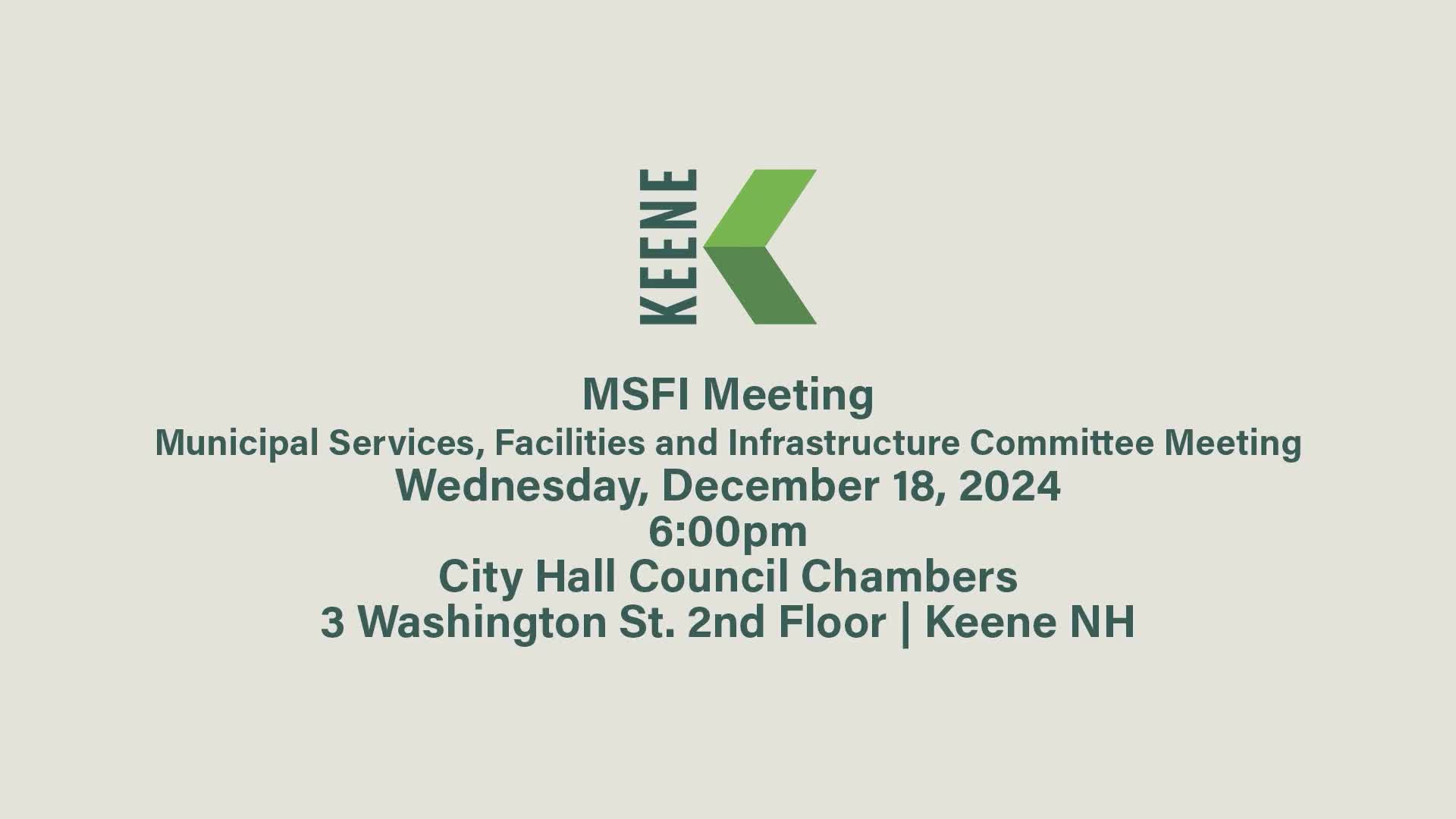Keene Committee Approves Roadway Safety Action Plan Enhancements
December 30, 2024 | Keene Municipal Services, Facilities & Infrastructure Committee, Keene, Cheshire County, New Hampshire
This article was created by AI summarizing key points discussed. AI makes mistakes, so for full details and context, please refer to the video of the full meeting. Please report any errors so we can fix them. Report an error »

The Keene City Council's Municipal Services, Facilities, and Infrastructure Committee convened on December 18, 2024, to discuss critical updates regarding the city's roadway safety and environmental management initiatives. The meeting highlighted the culmination of a year-long effort to develop the Keene Roadway Safety Action Plan for 2025, which aims to significantly reduce traffic fatalities and serious injuries.
Public Works Director Don Lecia opened the meeting by emphasizing the importance of the plan, which incorporates input from various stakeholders, including city officials, community members, and representatives from local organizations. The plan is built on a "safe system approach," recognizing human error in traffic incidents and focusing on proactive measures to enhance roadway safety.
Consultants from VHB presented the plan's key components, including strategies to improve safety for non-motorized users, enhance lighting and signage, and reduce conflicts at intersections—where 68% of crashes occur. The committee discussed the ambitious goal of a 50% reduction in fatalities and serious injuries by 2035, ultimately aiming for zero fatalities by 2045.
The meeting also addressed the importance of community engagement in shaping the plan, with over 500 respondents contributing feedback through surveys and public meetings. This input led to the identification of approximately 190 project recommendations, many of which are already in progress.
In addition to roadway safety, the committee reviewed recommendations from the Conservation Commission regarding invasive species education and management. This discussion underscored the city's commitment to environmental stewardship alongside infrastructure improvements.
The committee unanimously recommended that the city council adopt the roadway safety action plan, marking a significant step toward enhancing public safety and fostering community involvement in local governance. The council plans to revisit the plan annually to assess progress and adapt strategies as necessary, ensuring that it remains a living document responsive to evolving safety challenges.
Public Works Director Don Lecia opened the meeting by emphasizing the importance of the plan, which incorporates input from various stakeholders, including city officials, community members, and representatives from local organizations. The plan is built on a "safe system approach," recognizing human error in traffic incidents and focusing on proactive measures to enhance roadway safety.
Consultants from VHB presented the plan's key components, including strategies to improve safety for non-motorized users, enhance lighting and signage, and reduce conflicts at intersections—where 68% of crashes occur. The committee discussed the ambitious goal of a 50% reduction in fatalities and serious injuries by 2035, ultimately aiming for zero fatalities by 2045.
The meeting also addressed the importance of community engagement in shaping the plan, with over 500 respondents contributing feedback through surveys and public meetings. This input led to the identification of approximately 190 project recommendations, many of which are already in progress.
In addition to roadway safety, the committee reviewed recommendations from the Conservation Commission regarding invasive species education and management. This discussion underscored the city's commitment to environmental stewardship alongside infrastructure improvements.
The committee unanimously recommended that the city council adopt the roadway safety action plan, marking a significant step toward enhancing public safety and fostering community involvement in local governance. The council plans to revisit the plan annually to assess progress and adapt strategies as necessary, ensuring that it remains a living document responsive to evolving safety challenges.
View full meeting
This article is based on a recent meeting—watch the full video and explore the complete transcript for deeper insights into the discussion.
View full meeting
